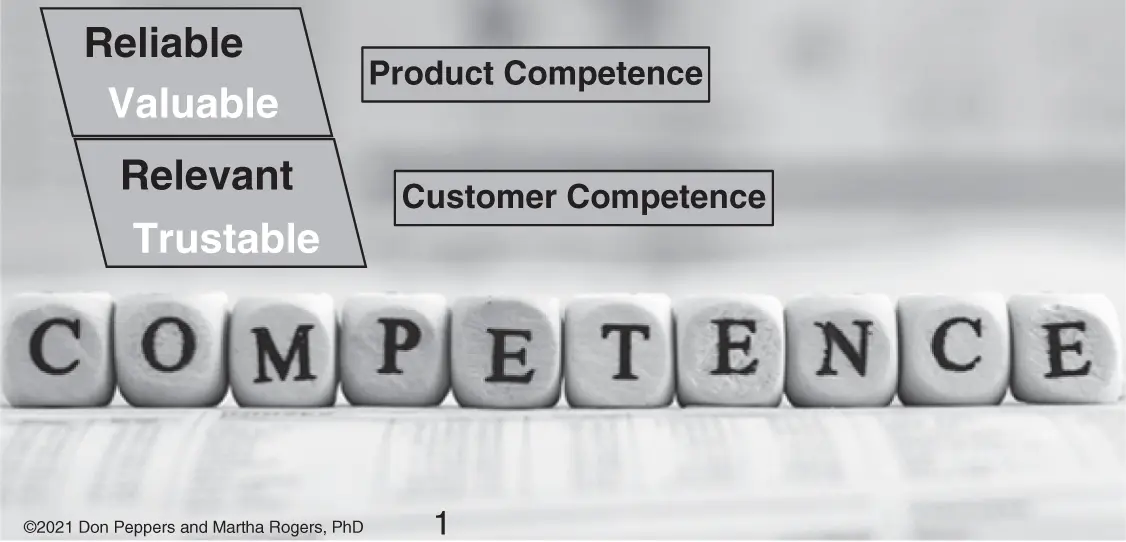This story perfectly illustrates the importance of removing friction in the customer experience, which is what this off-brand shoe was doing: removing friction in the shoe salesman's customer experience. Other businesses in other industries could do the same.
At a retail bank, when a customer comes to the branch or website to ask about or apply for a second mortgage, the bank could lace up its own shoes simply by filling out all the information on the mortgage application that it already knows about the customer (starting with name, address, and bank account number, for instance).
An airline could lace up its shoes for a customer whose flight gets canceled by rebooking them on the most likely next flight immediately, and then texting or emailing them the information, rather than simply telling them the flight is canceled and requiring them to call in to rebook themselves.
A mobile phone company could lace up a new customer's shoes by printing out a sample bill, while they're in the store or signing up for their service, so they can see what the phone service will likely cost, including all the charges, and making sure the format is clear.
Friction is the enemy of a good customer experience. Every ounce of friction removed will improve the experience.
Friction is the enemy of a good customer experience. Every ounce of friction removed will improve the experience.
For each of these reasons, if a company wants to improve customer loyalty and generate additional business with its customer experience, then the very first undertaking should be to remove any reason for the customer not to remain loyal—to eliminate whatever friction might lie in the way of meeting each customer's individual need in the easiest manner possible. Remember that in physics, friction is the sworn enemy of efficiency. The Second Law of Thermodynamics is that entropy always increases. This means that some friction is inevitable in any closed system and it slowly undermines the ordered systems (including the universe) through gravity, electrical charges, and other forces. Friction will eventually consume everything, as many billions of years from now the universe itself comes to a final end in what physicists call a heat death, because the sheer randomness (entropy) generated by eons of accumulated friction eventually overwhelms all order. But we digress.
Our point is that friction is a waste product, and in a customer's life friction plays a similar role, bleeding energy out of every customer experience. The wasted time required when we are holding on the phone or waiting in the queue before speaking with a service rep represents friction. Friction consists of whatever time and effort we must spend getting an item repaired or replaced when it breaks or runs down. It includes the cost of the gasoline and time required to drive to and from the store for groceries. Trying to remember the name of that restaurant we liked is friction. Even the time and effort spent online trying to figure out which product is better, or which service package makes the most sense, constitutes friction.
But the existence of friction in the customer experience also presents a significant business opportunity to an enterprise, because every time it can reduce the friction in its customer's experience, it is adding value to this experience. Value is added. when the friction process is reversed, eliminating waste and adding a bit more order to the customer's life. Identifying and eliminating whatever friction a customer encounters can be very beneficial for an enterprise seeking to gain a competitive advantage, generate new sales, and improve a customer's loyalty and lifetime value.
When Ally Bank clearly displays its toll-free number on every page of its website, along with the estimated wait time before speaking with a rep, it is adding value to the customer experience by eliminating friction. When JetBlue automatically credits a flyer's account with the value of a refund due after a delayed or canceled flight without requiring the customer to do anything, it is removing friction from the customer experience. When Netflix recommends a movie to a customer based on the customer's previous selections or ratings, it is adding value to the customer experience by removing friction. When Safelite AutoGlass emails or texts the customer with a picture of the repairman scheduled to come to their house on a service call in advance of arriving, the company is adding value by removing friction. When Amazon sends a refund to a customer in advance of the customer requesting it, friction is drained from the customer experience.
Travelocity, the online travel service, embarked on a friction-removal mission when it set out to improve its online customer experience by ensuring that customers were better able to solve their problems and meet their needs using the website's self-help tools and references. One of the things Travelocity discovered was that there were far more null searches logged by the website than they thought there ought to be. A null search is a search that returns no results. Every null search result likely represented a frustrated customer who had not been able to find what they were looking for, at least not with their first search. Digging into the problem, the company found that its own terminology was often at fault. A customer who was planning a cruise, for instance, might have searched for the term “suitcases,” trying to learn the weight limit or number of suitcases allowed on the cruise, or perhaps what the cost of extra luggage might be. But the term “suitcases” would show zero results at all, because Travelocity's references used the industry standard term, which was baggage . By reviewing all such null searches and then incorporating additional keywords to accommodate simpler, more common language, Travelocity was able to remove a substantial amount of friction from its customer experience. 6
A truly frictionless customer experience is one that presents absolutely no obstacles or barriers to the customer's meeting whatever need or doing whatever job they want to hire a company's product or service to do. The frictionless customer experience has to be reliable, valuable, relevant, and trustable. And for a customer experience to be truly frictionless, the enterprise must be both product competentand customer competent.

EXHIBIT 3.24 elements of frictionless experience
The term “product competence” can be thought of in terms of both the product or service's reliability and its value. A product-competent enterprise is capable of rendering its products or services on schedule, seamlessly across multiple channels, at reasonable prices, and consistently through time in such a way that they don't need a lot of maintenance, repair, correction, or undue attention from a customer to meet the customer's need. Importantly, product competence is something every business must master just to have any reasonable chance for profit at all and it’s safe to say that by the end of the twentieth century nearly every business in the industrialized world had mastered the issue of basic product competence, for the simple reason that any company that remained product incompetent had either gone out of business already or been absorbed into a more competent firm.
A product or service can be considered reliable in the eyes of the customer if it directly and efficiently solves their problem (or does the job they're looking for) without introducing a host of other hassles, problems, or issues. It should perform as advertised, without failing or breaking down. And reliability is required not just of the physical product or service sold to a customer, but also with respect to all the different services that surround that product (e.g., invoicing and shipping, handling inquiries and requests, making repairs or service improvements, and protecting customers' data and privacy). The website should function smoothly and clearly, service should be performed on time, security flaws should be eliminated, and so forth. In addition, customers don't think in terms of departments or silos, so an enterprise that delivers its customer experience through the separate, uncoordinated activities of multiple operating entities or business units isn't likely to appear very reliable to the customer. Regardless of whatever internal elements are involved in running a business, a reliable customer experience can only be delivered by removing managers' internal focus and trying to repair the division between customer-facing and non-customer-facing groups and processes in order to deliver a single, unified experience to each customer. From billing and invoicing to technology implementations and employee training programs, all parts of an enterprise should be cognizant of their role in influencing the customer experience.
Читать дальше













